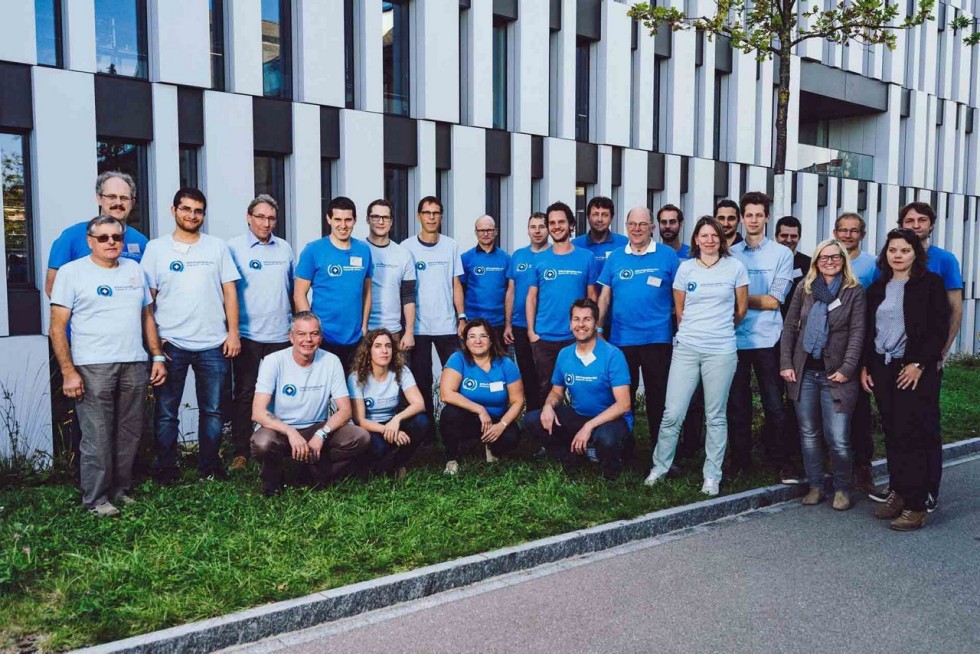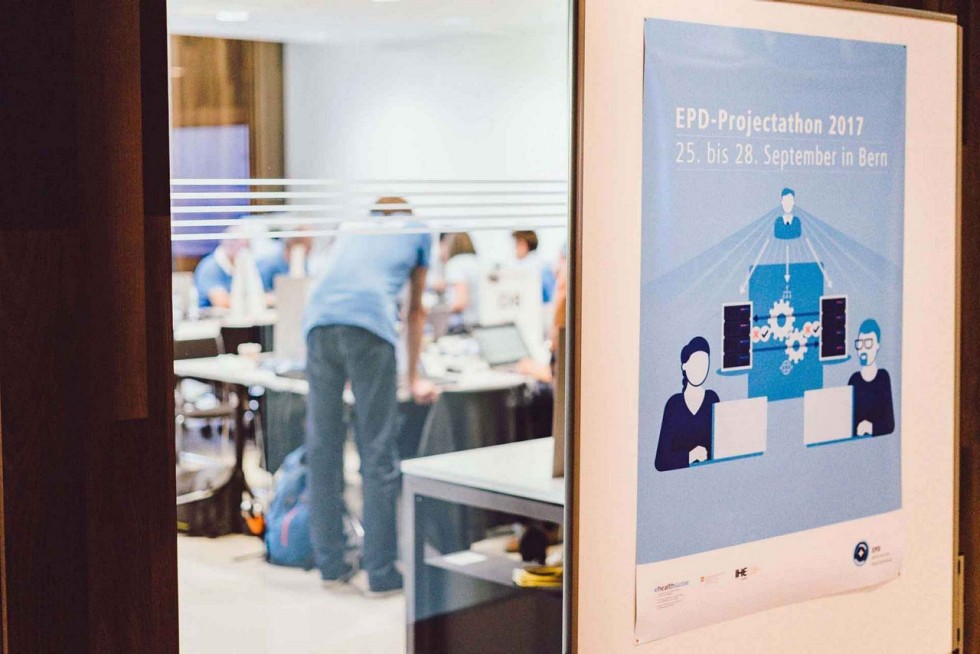Electronic patient record (EPR)
It won’t fail due to the technology
From the middle of 2018, it should be possible to open the first electronic patient records (EPR). The technology for this will be ready. The persons responsible at the Federation have assumed this based on the first comprehensive tests.
Text: Roger Welti, Bild: Raphael Schaller Photography, ©eHealth Suisse,

A marathon of a different kind took place in the last week of September in Köniz near Bern that involved 1500 metres of cable and 100 starters in 16 teams from 4 countries. Perched together in the same room and with the same goal, they came together to thoroughly test the technology for the electronic patient record (EPR) for the first time.
The more tests, the more you find out
“Projectathon” was the name the organisers gave to the four-day gathering on the premises of the Federal Office of Public Health. The reference to a marathon was altogether justified. IT specialists from different manufacturers needed all their endurance and concentration during the extended tests. There weren’t many breaks either, because they wanted to find out as much as possible in the time available.
“We set up and ran the IT infrastructure for a community that will allow an EPR to be opened and enable all defined use cases in the future,” explains Tino Mahn, head of the ten-man team from Swisscom Health. A large number of use cases were then trialled with the teams from other manufacturers. These included authenticating patients or health professionals with absolute certainty, opening and managing records, testing access rights, and transferring documents between parties. In doing so, it was necessary to follow a precisely defined procedure in all cases. “A team of arbitrators monitored the tests and evaluated them,” states Tony Schaller, Technical Project Manager for the Projectathon.
The team judged whether the specified standards and what are called integration profiles had been complied with. These IHE profiles describe standards for data exchange in the healthcare sector. Since the standards that are currently available internationally could not fulfil certain requirements of the EPR, specific profiles had to be defined first prior to the Projectathon. Depending on the success of a test, the independent arbitrators judged it as either “verified”, “partially verified” or “failed”.
According to Tony Schaller, the main focus was on the interoperability of the systems and the exchange of experiences between the participants, and not the race to get as many tests verified as possible. This is the reason why the organisers did not publish a list of team rankings. And yet, “The number of successful tests is certainly a measure of how advanced our solutions for the EPR already are,” states Tino Mahn.
The communities
Digital data from patients relevant to their treatment is stored locally at doctors’ practices, hospitals and other service providers. The electronic patient record (EPR) gives the patients access to this data and allows them to determine who they want to make it accessible to. What are referred to as communities facilitate opening and managing an EPR. These communities are made up of health professionals and their institutions, such as associations or hospitals, and in some cases cantons. As a technology partner for communities, Swisscom is setting up the IT infrastructure required for the EPR in the cantons of Zurich, Schaffhausen, Bern, Solothurn and Basel, and also for the Principality of Lichtenstein.
Swisscom Health as a vehicle for knowledge
The performance by Swisscom Health was very positive. The stability and performance of the eHealth platform which Swisscom Health operates for the EPR was impressive in the 29 tests performed. Thanks to the agility of the team, tiny problems could be rectified on-site, so that the solution could be tested again. The independent judges ranked no less than 26 tests as “verified” and three as “partially verified”. As a result, Swisscom Health was involved in one sixth of all successful tests, and, out of the 16 participating teams, performed well above average. “The quality assurance for our EPR solution clearly achieved its goal,” emphasises Thomas Bähler, Head of eHealth at Swisscom Health. He went on to add, “Throughout the tests, we were clearly seen as a vehicle for knowledge, not only by the organisers, but also by the other participants.”
On the right path to certification
Project Manager Tony Schaller also gave the participants a good report. When one considers how little time the developers must have had from the time the executive right for the federal law on the EPR was published, the standard was high. Schaller is convinced that, “If introducing the EPR fails in the coming year, it will certainly not be because of the technology”.
However, before that happens, the Federation first has to certify the EPR communities. The Projectathon tackled important hurdles that need to be overcome for this to happen. “The good results we achieved in the Projectathon show us and our customers that we are well on the way to achieving certification,” states Thomas Bähler of Swisscom Health. In the coming months, all the participants will continue making progress in developing their solutions. And we may well meet up again in 2018, when the next Projectathon is expected to take place.






